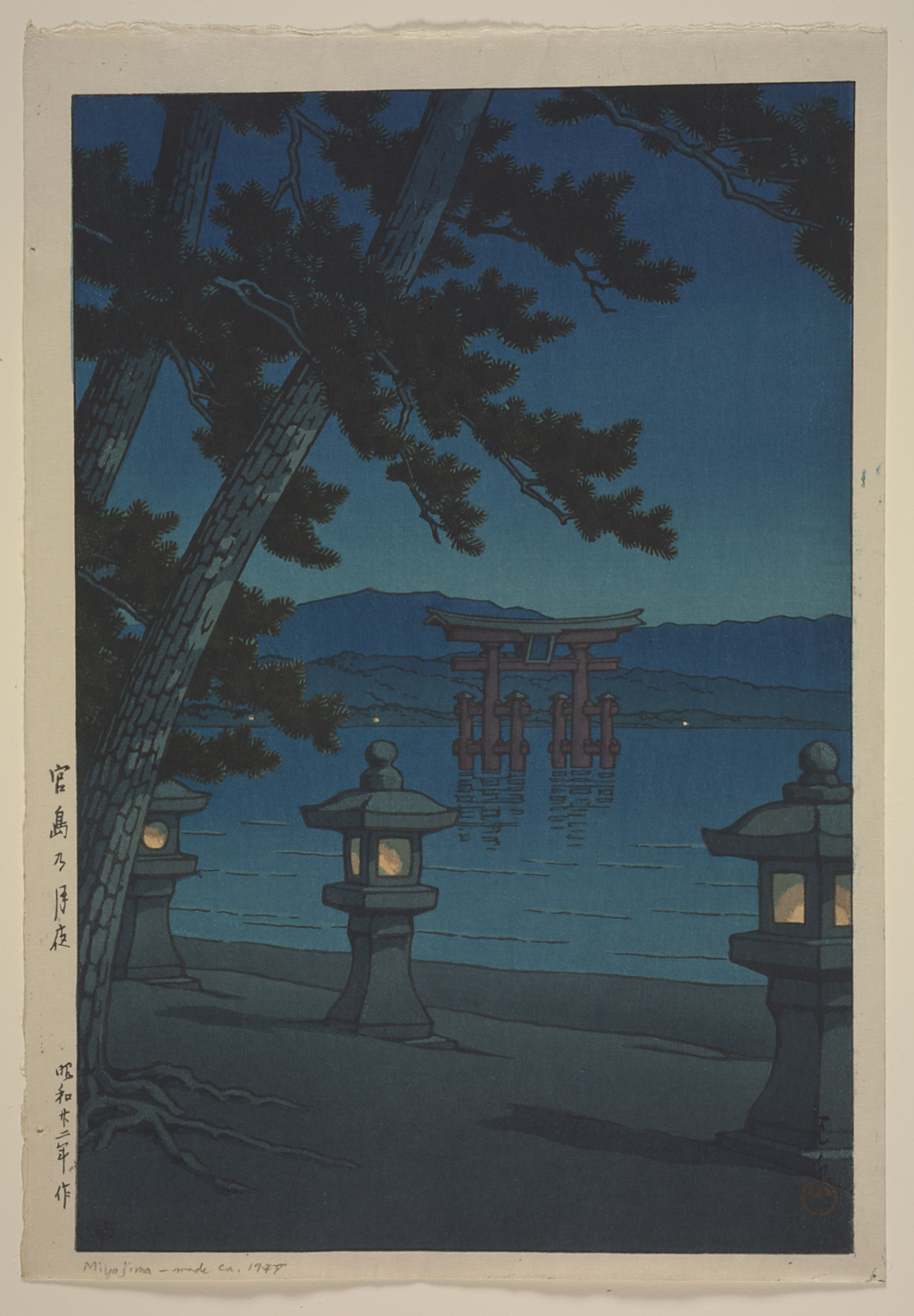Sacred Space and Japanese Art at the Spencer Museum of Art
Entry by Sasha Miller
Created by Kawase Hasui, a renowned 20th-century Japanese Shin-hanga(new prints) woodblock print artist, this image depicts the famous 50-foot-tall torii gate located at Itsukushima Shrine in Hiroshima. With an impressive architectural layout dating back to the 12th century, the shrine is also widely known for hosting one of the most remarkable floating festivals in Japan. Elegantly decorated boats carrying lanterns, portable shrines, priests, and musicians who perform traditional court music, travel through the torii gate celebrating the kami enshrined at the site. In addition to the festival, Miyajima Island itself is praised for its seasonal foliage as well as its numerous elaborate and historically significant shrines and temples.
Hasui depicts the vermillion torii gate that seemingly floats in the middle of the bay. A master of landscape prints and night scenes, he purposefully uses leaning trees and illuminated lanterns along the beach to frame the torii in the background, emphasizing its crimson grandeur as well as highlighting the scenic beauty of the island. Although the torii is a feature of a Shinto shrine, many believed that deceased souls traveled across water by boat to enter the Buddhist Pure Land, which indicates that Itsukushima had a broadly conceived religious character.

